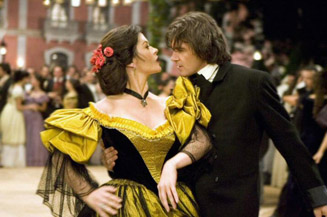|
|
What Went Wrong: The Legend of ZorroBy Shalimar SahotaSeptember 4, 2013
A film that concludes with the hero married and starting a family would generally imply that it’s all happily ever after. So do audiences really want to return for a sequel involving that family? The closest comparison here would be The Mummy Returns, which was successful but is largely remembered for its faults and rushed special effects. In The Legend of Zorro, the iconic hero is now a husband and a father and audiences get to see him having a family spat and getting drunk. Basically, it’s bogged down with moments that feel more suited to a soap opera rather than an action film. Also, why split up Alejandro and Elena? It’s a misguided decision that removes one of the great things about the first film, their banter and chemistry together. A story where they’re still a couple could have worked, generating humor as they quarrel on strategies and fight the bad guys together, disagreeing (or even complimenting) each other’s approach. A small part of this exists in the final third once Elena and Zorro finally work together to take down Armand. Given that it was initially considered, one also has to wonder what kind of film this could have been if Elena herself donned a mask and joined in on the action. As a fan of The Mask of Zorro, my expectations for the sequel were rather high. I viewed The Legend of Zorro at a preview screening and was ultimately left under-whelmed. It would be nice if this franchise had continued, but the result here felt like an unnecessary cash-in made up of leftovers. However, this might not be the last we’ve seen of the masked outlaw. Sony Columbia did pick up the rights to Isabel Allende’s novel Zorro. As an origin story on the character, it would suggest that they intend to reboot the franchise. 20th Century Fox also have a Zorro project, taking him in a completely different direction by producing the dark, post-apocalyptic Zorro Reborn. Let’s just hope that neither film borrows from The Legend of Zorro by featuring a horse on a train. I mean, just look at what happened to Disney’s The Lone Ranger.
[ View other columns by Shalimar Sahota ]
[ View other What Went Wrong columns ]
[ Email this column ]
|

|
|
|

|
Friday, November 1, 2024
© 2024 Box Office Prophets, a division of One Of Us, Inc.


